#artemis 1 mission
Text
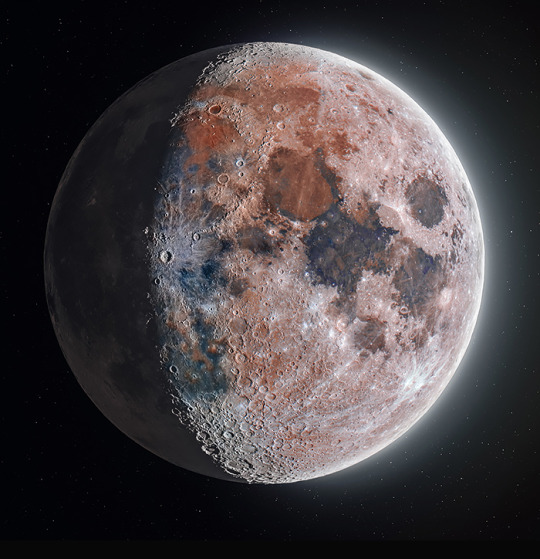
Moon: The Hunt for Artemis
l Andrew McCarthy & Connor Matherne
#moon#space#nasa#astrophotography#solar system#planets#galaxy#astronomy#night#sky#stars#universe#artemis 1 mission
7K notes
·
View notes
Photo
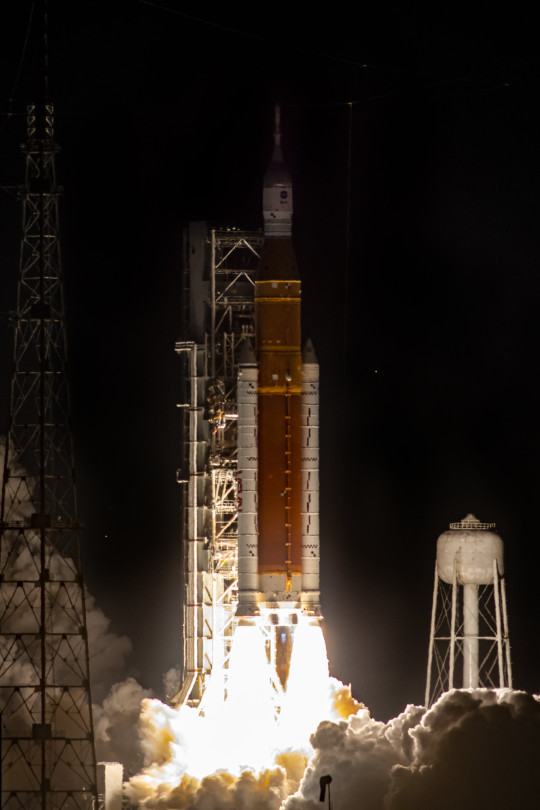



Successful Liftoff of NASA’s Artemis (Nov.16 © © © )
#nasa#artemis 1#solar system#astronomy#moon mission#moon#stars#artemis 1 mission#astrophotography#galaxy#universe#planet#cosmos#nebula#space
1K notes
·
View notes
Text
Spacesuited Snoopy doll floats in zero-g on moon-bound Artemis 1 mission
By Robert Z. Pearlman, 16 November 2022

"When NASA was identifying what the ZGI would be, it just seemed to make sense that it was Snoopy."
Snoopy, "the world-famous astronaut," has made it into space — again.
The white-spotted dog, who became "the first beagle on the moon" in a series of Peanuts comic strips in 1969, is now on his way back to the moon aboard NASA's Artemis 1 mission.
Snoopy, in the form of a small doll dressed in a one-of-a-kind replica of NASA's pressure suit for Artemis astronauts, is the "zero-g indicator" or ZGI on board the space agency's now lunar-orbit-bound Orion spacecraft.

"Oh, I'm sorry, Snoopy. They had to put you on a leash because you're hanging in the Orion capsule right now," NASA Administrator Bill Nelson said during an August photo op with the beagle (in this case, a costume character also wearing the bright orange spacesuit).
"Snoopy was the last person to be put in Orion when they closed the hatch."
Snoopy's leash, or tether, was to keep the doll in view of a camera inside Orion's cabin.
Traditionally, zero-g indicators have been flown on crewed spacecraft as a visual sign for the astronauts that they have reached orbit.
The Artemis 1 Orion is flying without a crew — other than Snoopy, four LEGO minifigures, Shaun the Sheep, and three instrumented manikins — so the doll was flown for the benefit of the public watching the launch on NASA's television channel or website.
"When NASA was identifying what the ZGI would be, it just seemed to make sense that it was Snoopy," Melissa Menta, senior vice president for marketing and communications at Peanuts Worldwide, said in an interview with collectSPACE.com.
"Snoopy has been part of the NASA history for so long."
Snoopy has been associated with NASA since 1968, when the space agency approached Peanuts artist Charles Schulz for permission to use his comic strip dog as a safety mascot in the wake of a fire that claimed three astronauts' lives.
That same year, NASA introduced the Silver Snoopy award, an honor presented only by astronauts to members of the NASA workforce whose outstanding achievements contributed to mission safety and success in human spaceflight.
"Sparky always said that he was very proud to have worked with NASA and to have had them choose his characters," Jeannie Schulz, the widow of Charles "Sparky" Schulz, said in a 2019 interview with collectSPACE.
In 2018, 50 years after Snoopy first entered service for the U.S. space program, NASA and Peanuts Worldwide expanded the use of the beagle and the Peanuts gang to help promote NASA's Artemis missions and its ongoing efforts to engage students in science, technology, engineering, and mathematics (STEM) activities.
Since then, Peanuts has licensed companies like Hallmark to produce spacesuited Snoopy dolls, including one that was flown to the International Space Station.
The ZGI on Orion, though, is a custom creation.

To create the doll, Peanuts turned to Martin Izquierdo, a noted costume designer specializing in miniatures, who had previously made the outfits for a Snoopy-themed fashion exhibit.
Izquierdo came out of retirement to fabricate the Snoopy-sized pressure suit for the Artemis 1 mission, working together with Ted Southern, the president and CEO of Final Frontier Design, a firm developing spacesuit parts for NASA and private spaceflight companies.
"NASA sent us reference materials and they sent us the cloth," said Menta.

Over the next 25 days, Snoopy will float aboard Orion as it makes a close flyby of the lunar surface and then soars well past the moon, traveling farther away from Earth than any spacecraft made for astronauts (or beagles) in history.
He will then return home, protected by a heat shield designed to survive a reentry from lunar-return velocities.
Snoopy will splash down on December 11, having added another space mission to his credit.
It is not clear what will happen to him after that, although if returned to Peanuts Worldwide, the doll will be destined for the Charles M. Schulz Museum and Research Center in Santa Rosa, California.
(A pen nib used by the late comic strip artist to draw Peanuts is also on Orion and will be going to the museum as well.)
🤍
#Snoopy#Artemis 1 mission#Orion spacecraft#Artemis 1 Orion#Peanuts Worldwide#Charles Schulz#Martin Izquierdo#Ted Southern#Charles M. Schulz Museum and Research Center#NASA#Silver Snoopy Award
59 notes
·
View notes
Photo
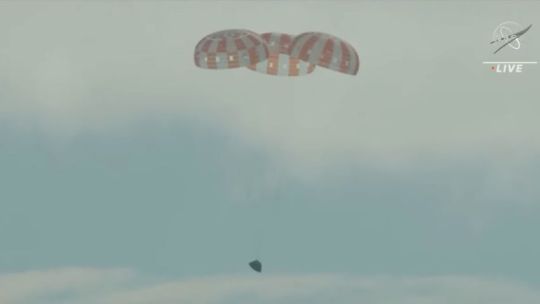
NASA's Artemis moon mission ends with splashdown | CNN
The Artemis I mission — a 25½-day uncrewed test flight around the moon meant to pave the way for future astronaut missions — came to a momentous end as NASA’s Orion spacecraft made a successful ocean splashdown Sunday.
The spacecraft finished the final stretch of its journey, closing in on the thick inner layer of Earth’s atmosphere after traversing 239,000 miles (385,000 kilometers) between the moon and Earth. It splashed down at 12:40 p.m. ET Sunday in the Pacific Ocean off Mexico’s Baja California.
This final step was among the most important and dangerous legs of the mission.
But after splashing down, Rob Navias, the NASA commentator who led Sunday’s broadcast, called the reentry process “textbook.”
“I’m overwhelmed,” NASA Administrator Bill Nelson said Sunday. “This is an extraordinary day.”
The capsule is now bobbing in the Pacific Ocean, where it will remain until nearly 3 p.m. ET as NASA collects additional data and runs through some tests. That process, much like the rest of the mission, aims to ensure the Orion spacecraft is ready to fly astronauts. ...
16 notes
·
View notes
Text
নাসার মুন রকেটের দ্বিতীয় উৎক্ষেপণের উদ্যোগ বাতিল
নাসার মুন রকেটের দ্বিতীয় উৎক্ষেপণের উদ্যোগ বাতিল
নাসার নতুন আর্টেমিস আই মুন রকেটের উৎক্ষেপণ স্থগিত হওয়ার পর সম্ভাব্য দীর্ঘ বিলম্বের সম্মুখীন হচ্ছে। এটি হলো, নাসার মুন রকেটের দ্বিতীয় উৎক্ষেপণের উদ্যোগ বাতিল।
স্পেস লঞ্চ সিস্টেম (SLS) যানটি উঠানোর জন্য কন্ট্রোলাররা শনিবার আবার চেষ্টা করে ব্যর্থ হয়েছেন। কিন্তু জ্বালানি লিক বন্ধ করতে পারেনি।
প্রকৌশলীদের এখন রকেটটি পরিদর্শন করতে হবে। যেকোন সম্ভাব্য মেরামত লঞ্চ প্যাডের পরিবর্তে ওয়ার্কশপে…
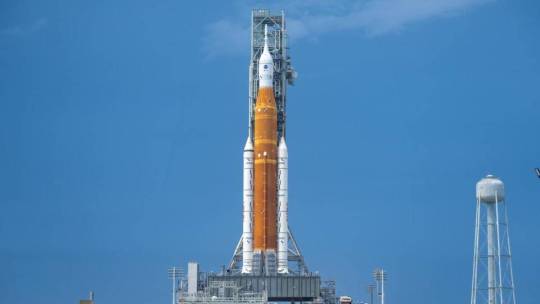
View On WordPress
#artemis#artemis 1#artemis 1 launch#artemis 1 mission#artemis 1 rocket launch#artemis 1 rocket launch florida#artemis 1 rocket launch scrubbed#artemis launch#artemis launch 2022#moon rocket#nasa artemis 1 rocket launch#nasa artemis 1 rocket launch scrubbed#nasa artemis launch#nasa moon mission#nasa moon rocket artemis 1 launch#nasa moon rocket launch#nasa moon rocket launch date#nasa rocket launch#rocket launch#space launch system
2 notes
·
View notes
Text
Artemis 1 Update - Reoccurrence Of Liquid Hydrogen Leak.

Latest Update: Liquid Hydrogen Flows Again to Core Stage Tank.
Engineers are once again pumping liquid hydrogen to the core stage after warming the location of the liquid hydrogen leak.
A second instance of the liquid hydrogen leak was discovered.
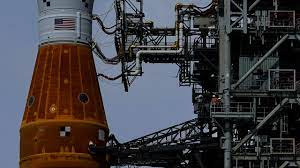
A hollow between the ground and flight side plates of a fast connection in the engine section has once again developed a leak of liquid hydrogen, which has caused the problem to recur.
Additional attempts to troubleshoot are now being discussed by the teams.
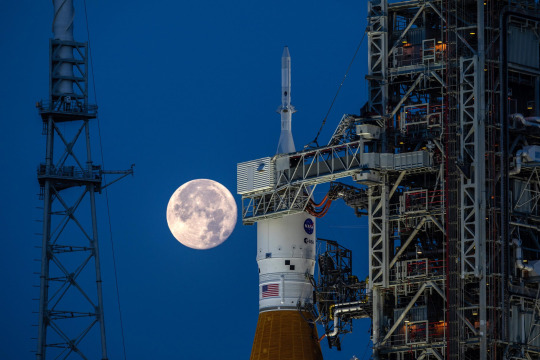
After discovering a leak of liquid hydrogen in a fast disconnect cavity, the engineers halted the flow of the propellant to the core stage so that they may investigate the cause of the problem.
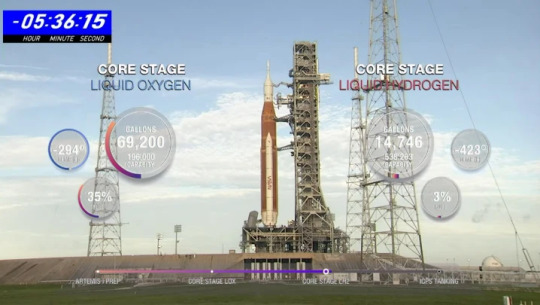
Additional attempts to troubleshoot are now being discussed by the teams.
After discovering a leak of liquid hydrogen in a fast disconnect cavity, the engineers halted the flow of the propellant to the core stage so that they may investigate the cause of the problem.
The launch controllers are now trying to reseat the quick disconnect by heating it up in an effort to create a good seal. Liquid oxygen flow is ongoing.

A problem with a hydrogen leak has prevented NASA from continuing the launch preparations for its Space Launch System (SLS) rocket that was scheduled to take place today, Saturday, September 3.
The problem began during the tanking process, which is when the rocket is loaded with fuel in preparation for the launch.
This process is still happening.
There have been numerous issues along the road, including a prior leak of liquid hydrogen that occurred during the several wet dress rehearsals that the rocket went through earlier in the year.
The launch that took place today represents the conclusion of years of effort on the SLS.

The fuel for the rocket is a combination of liquid oxygen and liquid hydrogen, and in order for the rocket to function properly, these liquids have to be fed into it via a line.
The flow of liquid oxygen also needed to be mediated while the leak of liquid hydrogen was being addressed in order to maintain the correct ratio of liquid oxygen to liquid hydrogen, which is required for proper operation.
On September 3, shortly before 7:30 a.m. Eastern Time, a cavity for a fast disconnect began leaking hydrogen, which led to the release of liquid hydrogen.
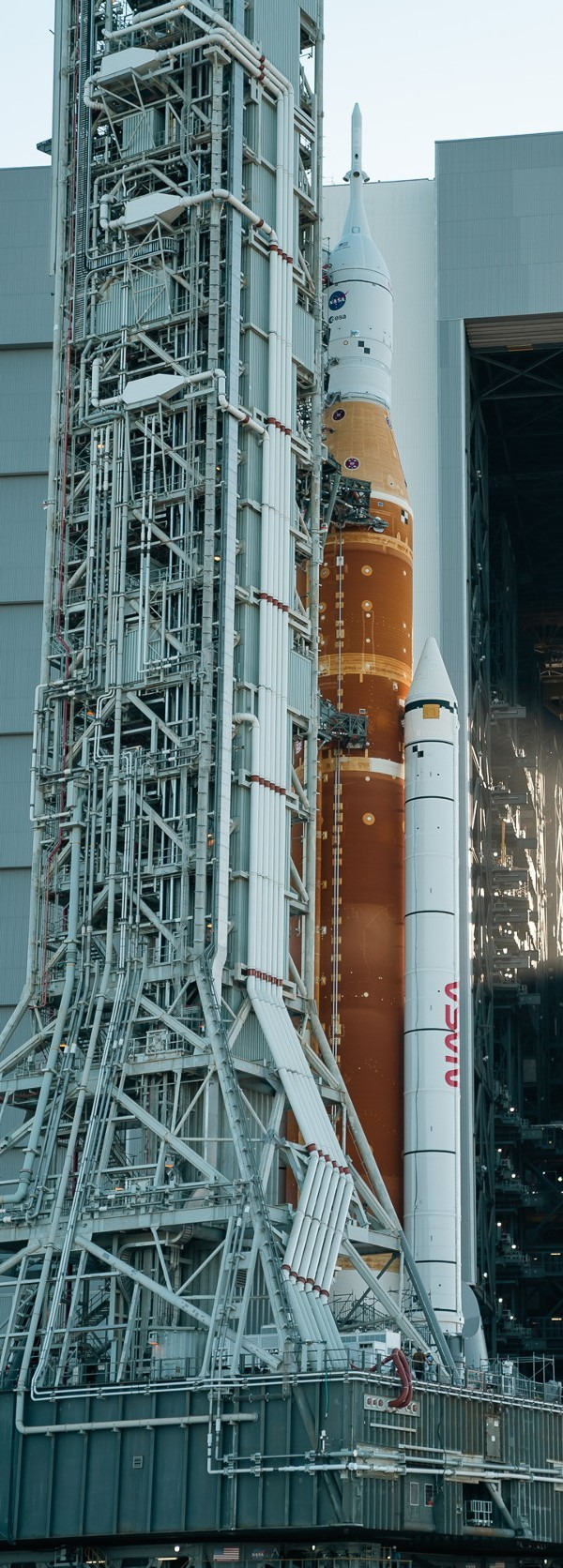
The flow of hydrogen was stopped so that engineers could work on the quick disconnect to get it to seal properly, an operation that took around half an hour to complete.
During this time, the quick disconnect was disconnected from its supply.
After eight in the morning Eastern Time, the problem seemed to have been fixed, and the flow of liquid hydrogen resumed.
After warming up a quick disconnect in the engine section where a hydrogen leak was detected in the cavity between the ground and flight side plates of the quick disconnect, "launch controllers have resumed flow of liquid hydrogen to the core stage," NASA wrote in an update.
"Launch controllers have resumed flow of liquid hydrogen to the core stage." The fast disconnect was warmed up by the teams in an effort to reseat it and create an adequate seal.
The issue, however, reemerged once the flow of propellant was restarted, and the pressure was brought back up to its previous level.
Once the tanks of liquid oxygen had reached 56% of their capacity and the tank of liquid hydrogen had reached 8% of its capacity, the connection to the rocket core stage began to leak again.
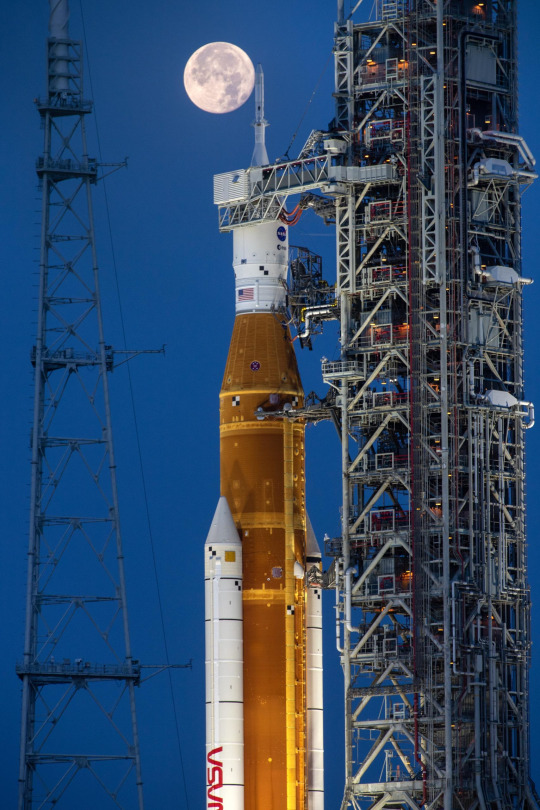
In the next step, engineers will reportedly try to reseat the quick disconnect by using helium to increase the pressure in the line.
This information comes from NASA TV.
Courtesy: nasa.gov
~ Jai Krishna Ponnappan
Find Jai on Twitter | LinkedIn | Instagram
You may also want to read more about Space Exploration, Space Missions and Systems here.
#NASA#Artemis 1#Moon Mission#Artemis 1 countdown#Artemis 1 Hydrogen leak#Artemis 1 launch#Artemis 1 launch date and time#Artemis 1 mission details#Artemis 1 mission#space exploration#manned space mission#Artemis
1 note
·
View note
Text

Little Holly ! 🔥
… Yeah. You don’t wanna mess with her.
#holly short#artemis fowl#fowldom#drawing#fanart#half goblin holly for the win#I know Holly is supposed to be born around 1920s but I realized it too late#I wish I had incorporated roaring twenties design nods but alas#maybe next time#crackfic idea : what if Artemis had abducted Holly when she was the fairy equivalent of twelve years old#option 1 Butler threatens to resign and they abort mission#option 2 Holly kicks their butt#terrible idea either ways
22 notes
·
View notes
Text
What a sight! 👀😳 On November 28, 2022, day 13 of the @NasaArtemis mission, the Orion capsule captured the Earth transiting behind the Moon as it reached its farthest distance from Earth, 268,563 miles (432, 210 km), the farthest any spacecraft designed to carry humans has ever reached
Credit: NASA
182 notes
·
View notes
Text

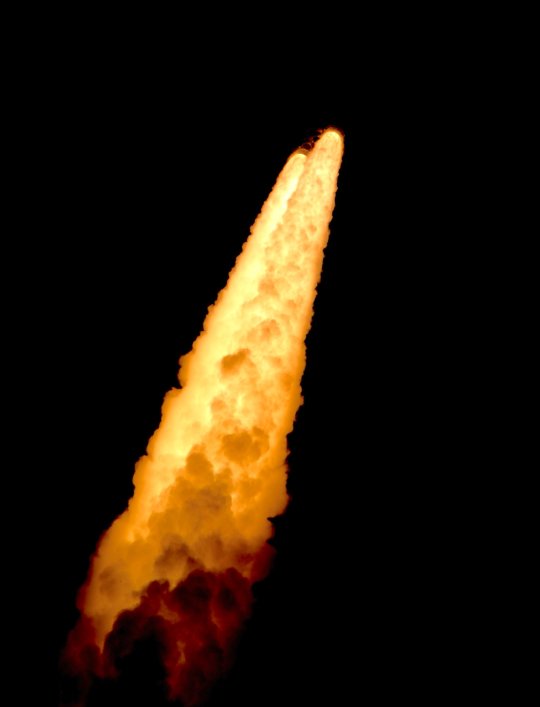
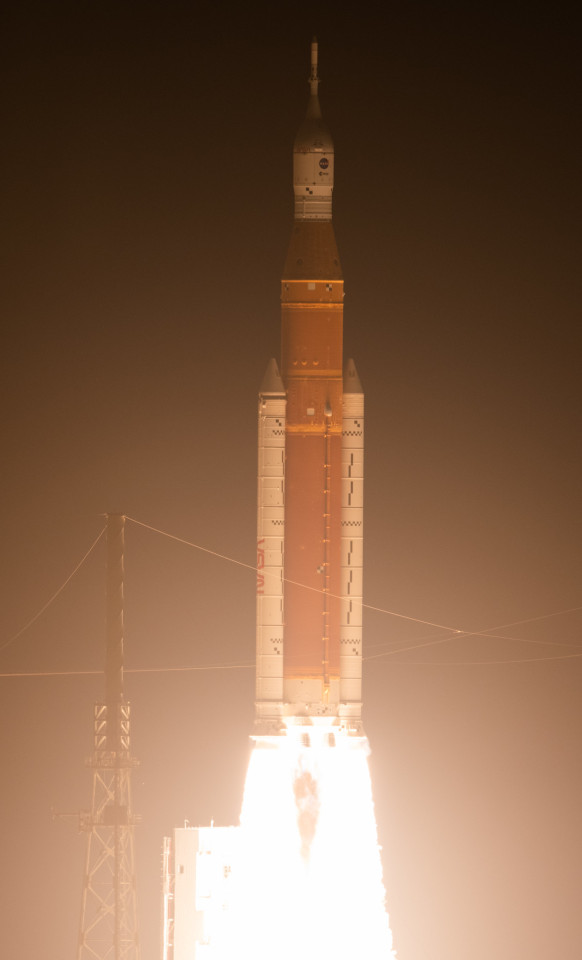
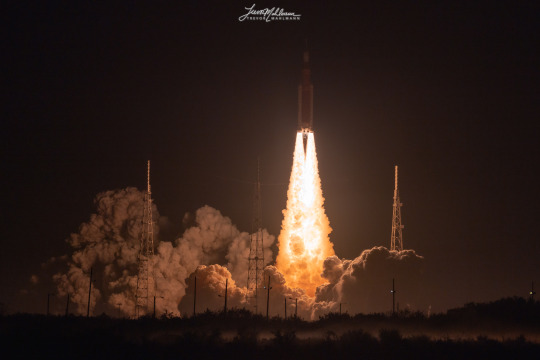
Credit: ESA photographer Stephane Corvaja, NASA HQ Photo and Trevor Mahlmann
#nasa#space#photography#artemis#artemis 1#artemis I#orion#orion spacecraft#moon#moon mission#science#launch#rocket#my post
220 notes
·
View notes
Text
My body is on Earth but my heart is inside the Orion spacecraft on its way to orbit the moon
51 notes
·
View notes
Text
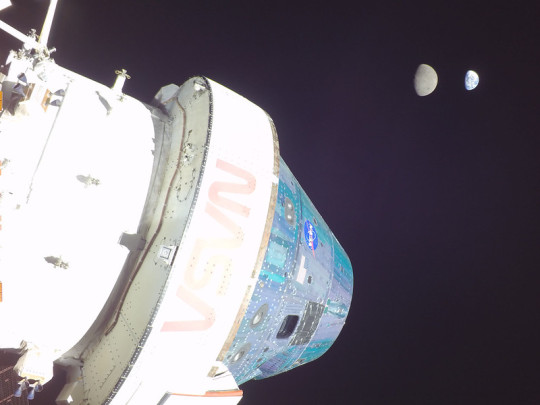
Artemis I: Orion, Earth, and Moon
#moon#earth#solar system#space#nasa#artemis 1#universe#astrophotography#astronomy#stars#night#sky#artemis 1 mission
2K notes
·
View notes
Text
I love a lot of things about my job but I think my favorite by far is how my coworkers blow up our team group chat with chatter and excitement about current goings on at NASA. New JWST images. New research released. We screamed and cried and keysmashed during the Artemis 1 launch.
Currently? Orion capsule splashdown.
There's just something special about having a group of people in brickspace that you can geek out with over this kind of stuff.
#nasa#orion capsule#orion splashdown#artemis 1#artemis program#artemis mission#fox thoughts#science outreach#steam outreach
41 notes
·
View notes
Text


The United States has returned to the lunar surface for the first time in more than 50 years after a privately-built spacecraft named Odysseus capped a nail-biting 73-minute descent from orbit with a touchdown near the moon’s south pole.
Amid celebrations of what NASA hailed “a giant leap forward,” there was no immediate confirmation of the status or condition of the lander, other than it had reached its planned landing site at crater Malapert A.
But later Intuitive Machines, the Texas-based company that built the first commercial craft to land on the moon, said the craft was “upright and starting to send data.”
The statement on X said mission managers were “working to downlink the first images from the lunar surface.”
The so-called “soft landing” on Thursday, which Steve Altemus, the company’s founder, had given only an 80% chance of succeeding, was designed to open a new era of lunar exploration as NASA works towards a scheduled late-2026 mission to send humans back there.
“Welcome to the moon,” Altemus said when touchdown when the 5.23pm touchdown was eventually confirmed, after about 10 minutes in which Odysseus was out of contact.
It was the first time any US-built spacecraft had landed on the moon since NASA’s most recent crewed visit, the Apollo 17 mission in December 1972, and the first visit by commercial vehicle following last month’s failure of Peregrine One, another partnership between the space agency and a private company, Astrobotic.

“Today, for the first time in more than a half century, the US has returned to the moon. Today, for the first time in the history of humanity, a commercial company, an American company, launched and led the voyage up there,” Bill Nelson, the NASA administrator, said.
“What a triumph. Odysseus has taken the moon. This feat is a giant leap forward for all of humanity.”
There was no video of Odysseus’s fully autonomous descent, which slowed to about 2.2mph at 33ft above the surface.
But a camera built by students at Florida’s Embry-Riddle Aeronautical University was designed to fall and take pictures immediately before touchdown, and NASA cameras were set to photograph the ground from the spacecraft.
The 14ft (4.3 metres) hexagonal, six-legged Nova-C lander, affectionately nicknamed Odie by Intuitive Machines employees, is part of NASA’s commercial lunar payload services (CLPS) initiative in which the agency awards contracts to private partners, largely to support the Artemis program.
NASA contributed $118m to get it off the ground, with Intuitive Machines funding a further $130m ahead of its February 15 launch from Florida’s Kennedy Space Center on a Falcon 9 rocket from Elon Musk’s SpaceX company.

The IM-1 mission, like the doomed Peregrine effort, is carrying a payload of scientific equipment designed to gather data about the lunar environment, specifically in the rocky region chosen as the landing site for NASA’s crewed Artemis III mission planned for two years’ time.
It is a hazardous area – “pockmarked with all of these craters,” according to Nelson – but chosen because it is believed to be rich in frozen water that could help sustain a permanent lunar base crucial to future human missions to Mars.
Scientists announced last year that they believed tiny glass beads strewn across the moon’s surface contained potentially “billions of tonnes of water” that could be extracted and used on future missions.
The risks are worth it, Nelson told CNN on Thursday, “to see if there is water in abundance. Because if there’s water, there’s rocket fuel: hydrogen, and oxygen. And we could have a gas station on the south pole of the moon.”
The planned operational life of the solar powered lander is only seven days, before the landing site about 186 miles from the moon’s south pole moves into Earth’s shadow.
But NASA hopes that will be long enough for analysis of how soil there reacted to the impact of the landing.
Other instruments will focus on space weather effects on the lunar surface, while a network of markers for communication and navigation will be deployed.
“Odysseus, powered by a company called Intuitive Machines, launched upon a SpaceX rocket, carrying a bounty of NASA scientific instruments, is bearing the dream of a new adventure in science, innovation, and American leadership in space,” Nelson said.

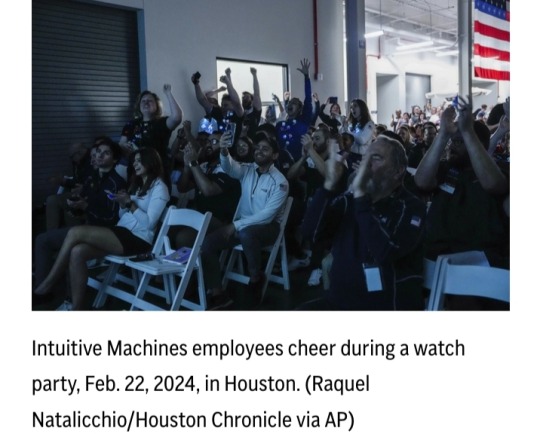
Through Artemis, NASA’s return-to-the-moon program that also has longer-term visions of crewed missions to Mars within the next two decades, the US seeks to stay ahead of Russia and China, both of which are planning their own human lunar landings.
Only the US has previously landed astronauts in six Apollo missions between 1969 and 1972, while five countries have placed uncrewed spacecraft there.
Japan joined the US, Russia, China, and India last month when its Smart Lander for Investigating the Moon (Slim) made a successful, if awkward touchdown after a three-month flight.
Two further Intuitive Machines launches are scheduled for later this year, including an ice drill to extract ingredients for rocket fuel, and another Nova-C lander containing a small Nasa rover and four small robots that will explore surface conditions.
https://www.theguardian.com/science/2024/feb/22/us-moon-landing-odysseus-intuitive-machines
youtube
US returns to lunar surface with for first time in over 50 years
23 February 2024
A spacecraft built and flown by Texas-based company Intuitive Machines landed near the south pole of the moon, the first US touchdown on the lunar surface in more than half a century, and the first ever achieved entirely by the private sector.
Communication with Odysseus seemed be lost during the final stages of the landing, leaving mission control uncertain as to the precise condition and position of the lander, according to flight controllers heard in the webcast.
US returns to lunar surface for first time in over 50 years: ‘Welcome to the moon.’
#Odysseus#Intuitive Machines#Youtube#NASA#Malapert A#moon#moon landing#spacecraft#Steve Altemus#lunar exploration#Bill Nelson#Nova-C lander#Odie#commercial lunar payload services (CLPS)#Artemis#Kennedy Space Center#Falcon 9#Elon Musk#SpaceX#IM-1 mission#Smart Lander for Investigating the Moon (SLIM)#lunar lander#earth
22 notes
·
View notes
Photo

Artemis 1 Orion on track for return to Earth after moon flyby | Space
For NASA's Orion spacecraft, the next stop is home.
The uncrewed spacecraft flying on NASA's Artemis 1 mission passed a major milestone in its mission today (Dec. 5) when it successfully performed a 207-second engine burn while just just 79 miles (128 kilometers) above the lunar surface. The maneuver placed Orion on track to return home, where it will splash down in the Pacific Ocean on Dec. 11, if all goes according to plan.
And in a media teleconference on Monday (Dec. 5), Orion spaceccraft mission managers asserted that so far, that's exactly how everything is going. "Everything that vehicle was asked to do, it's done. And it's done it phenomenally," said Judd Frieling, flight director at NASA's Johnson Space Center (JSC). ...
0 notes
Text
Shaun the Sheep
"Although it might be a small step for a human, it's a giant leap for lambkind," said European Space Agency's David Parker of Shaun the sheep's space trip. Shaun is flying in the Artemis 1 Official Flight Kit (OFK) 🛰️🚀


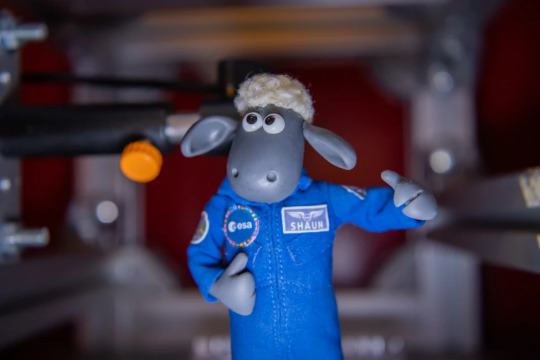
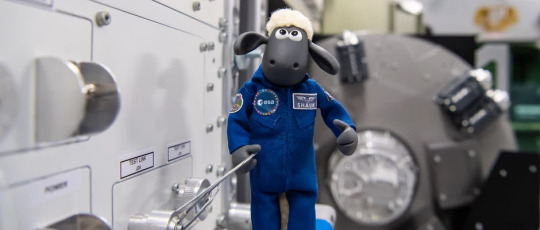
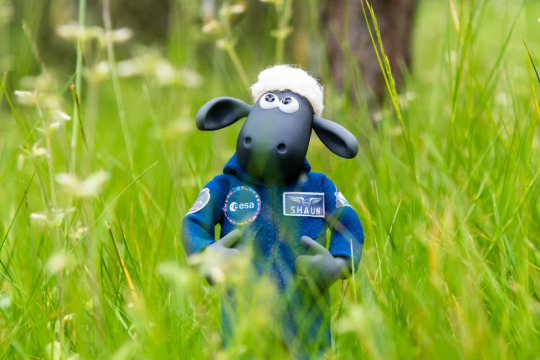
Photo credit: European Space Agency via Space.com /BBC Radio 4 Today/Aardman via Science Focus 🛰️🚀
#shaun the sheep#artemis 1#artemis moon rocket#official flight kit#space travel#european space agency#artemis rocket#lambkind#shaun the sheep doll#nasa#nasa moon mission#friday fun#aardman#animation#december#apollo 17#50th anniversary#space
40 notes
·
View notes
Photo


MOONHAVEN ON AMC!!! YESS I KNEW IT WOULD BE REAL!!
https://www.nasa.gov/specials/artemis/
https://earthsky.org/space/scientists-grow-plants-in-lunar-soil/#:~:text=The%20answer%20to%20the%20first,simulant%20made%20from%20volcanic%20ash.
+ Lunar soil plants growing!!!
https://www.nasa.gov/content/humans-on-the-moon/index.html
PLEASE REBLOG
SOOOOOOO COOOOOOOOOOOOOL!!!!!! <3 <3 <3
#moonhaven#real moonhaven#moonhaven real#scifi#sci fi#moon#artemis 1#artemis#artemis1#nasa#nasa moon#moon mission#nasa mssion#nasa moon mission#lunarpunk#lunar#lunarpunks#lunar punk#moon aesthetic#aesthetic#moonhaven series#moonhaven amc#amcplus#amc+#amc plus#amc moonhaven#haven#moon haven#moons#fullmoon2022
34 notes
·
View notes